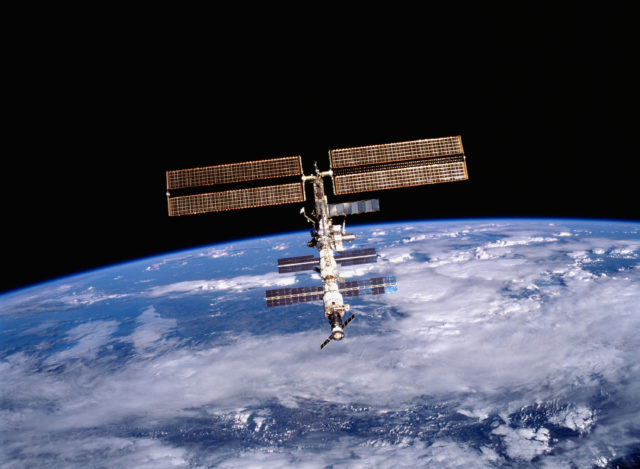Everything you need to know about Nasa’s moon-orbiting space station
Plans are in progress for a lunar outpost to help facilitate manned missions to the moon.

Almost five decades since man first landed on the moon, Nasa is once again setting its sights on possible manned lunar missions.
In December last year, US President Donald Trump signed a policy instructing the space agency to send astronauts back to the moon, just months after Nasa revealed plans to build a lunar-orbiting space station.
Since then, things have been in progress to make the Lunar Orbital Platform-Gateway a reality, with Nasa recently inviting the US industry to help build certain components of the lunar outpost as part of a private-public partnership.
Here’s everything you need to know:
So what exactly is this outpost?
The Lunar Orbital Platform-Gateway, also known as the Gateway, will be a space station capable of supporting four crew members at a time.
It is expected to be smaller than the International Space Station (ISS) – which currently houses six astronauts at a time.
Its aim, according to Nasa, is to “become the orbital outpost for robotic and human exploration operations in deep space”, while facilitating scientific and commercial activities on and around the moon.
How does Nasa plan to build the Gateway?

Nasa’s plan is to make use of its Space Launch System (SLS) rocket and Orion deep-space capsule – both of which are still under construction – to transport key components of the Gateway and build it piece-by-piece in orbit.
The outpost’s first piece – which will be the power and propulsion element (PPE) that will be used to generate electricity for the Gateway – is scheduled for launch in 2022.
Provided all goes according to plan, other key components such as a crew habitat module, a robotic arm and an airlock, will follow in phased missions.
What will the Gateway do?
The station will be used as a staging point for lunar explorations and possibly facilitate manned Mars missions in the future.
According to Nasa, Gateway missions will enable them “to develop new techniques and apply innovative approaches to solving problems in preparation for longer-duration missions far from Earth”.
It would mean conducting scientific experiments aboard the Gateway – similar to what the ISS crew members are currently doing.
William Gerstenmaier, Nasa’s associate administrator for Human Exploration and Operations, said: “The Gateway could move to support robotic or partner missions to the surface of the moon, or to a high lunar orbit to support missions departing from the gateway to other destinations in the solar system.”
How will the Gateway reach the moon?

Nasa plans to assemble the Gateway in an extremely elliptical orbit which will bring the station within 930 miles (1,500 km) of the lunar surface at closest approach and as far away as 43,000 miles (70,000 km).
The elliptical orbit, expected to last for six days, will allow the Gateway to stay out of the moon’s shadow to provide uninterrupted communication with Earth.
When is it likely to happen?

If all goes according to plan, the Gateway could be ready to accommodate astronauts by the middle of the next decade, according to Nasa.
Jason Crusan, Nasa’s director of Advanced Exploration Systems, said: “Since the directive was issued in December to return to the moon, the agency has been moving full-steam ahead with plans for robotic and human lunar exploration.
“It’s an exciting time to be at Nasa, and we look forward to partnering with US industry and international partners as we lead the return to the moon, and go beyond.”
How has the response been?

While the moon station is expected to be a result an inter-agency cooperation, with involvement from Russian space agency Roscosmos and Japanese space agency, the plan has received critisism.
Former ISS astronaut Terry Virts believes the Gateway is not an effective next step in human spaceflight beyond Earth orbit after the ISS.
Writing on Ars Technica, he said: “In the case of this gateway, there is no concrete human spaceflight goal.
“Instead, there is simply a fuzzy promise of having an ‘ecosystem’ of capability in orbit around the Moon that will eventually enable humans to go to Mars.”
Meanwhile, Robert Zubrin, aerospace engineer and Mars Society founder, is of the opinion there is no need for a moon-orbiting space station.
Writing in the National Review, he said: “If the goal is to build a Moon base, it should be built on the surface of the Moon.
“That is where the science is, that is where the shielding material is, and that is where the resources to make propellant and other useful things are to be found.”





